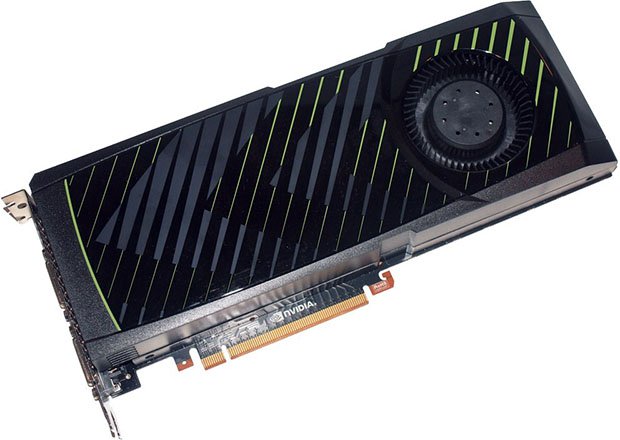 GeForce GTX 580 on the Fermi architecture: one of the video cards that is removed from support
GeForce GTX 580 on the Fermi architecture: one of the video cards that is removed from supportThe company Nvidia has published a
message about the termination of support for video cards on the architecture of Fermi. From April 2018, Game Ready driver updates, including performance improvements, new features, and bug fixes, will only be released for Kepler, Maxwell, and Pascal video cards.
Critical updates for Fermi will continue to be released until January 2019.
Also since April 2018,
support for 32-bit operating systems has
ceased . Nvidia
warned this in advance in December 2017.
New versions of 32-bit drivers will not be released anymore, regardless of the video card model. Up to this point, Nvidia has released graphics drivers for 32-bit and 64-bit versions of Windows, Linux, and FreeBSD. Now only 64-bit versions will remain. Nvidia noted that new driver versions will not be installed and will not be able to work on 32-bit operating systems, and new features and improvements are not planned to be ported back to the GeForce Game Ready Driver earlier versions.
As noted earlier, the rejection of support for 32-bit systems is associated with their low prevalence. For example, according to statistics Steam currently less than 2% of computers work under 32-bit OS. Obviously, the company does not want to disperse the efforts of developers to serve a small audience. Users of Nvidia video cards on 32-bit operating systems need only stop the update and work on older versions of the drivers - they will continue to function in normal mode. New features that Nvidia may introduce in future versions of drivers will not be available to them.
As for video cards based on Fermi processors, only critical updates will be available for drivers for 32-bit operating systems until January 2019.
Full list of video cards on Fermi architecture processorsNVIDIA GeForce 410M
NVIDIA GeForce 510
NVIDIA GeForce 605
NVIDIA GeForce 610M
NVIDIA GeForce 620M
NVIDIA GeForce 705A
NVIDIA GeForce 705M
NVIDIA GeForce 710A
NVIDIA GeForce 710M
NVIDIA GeForce 720A
NVIDIA GeForce 720M
NVIDIA GeForce 800M
NVIDIA GeForce 810M
NVIDIA GeForce 820A
NVIDIA GeForce 820M
NVIDIA GeForce GT 415M
NVIDIA GeForce GT 420
NVIDIA GeForce GT 420M
NVIDIA GeForce GT 425M
NVIDIA GeForce GT 430
NVIDIA GeForce GT 435M
NVIDIA GeForce GT 440
NVIDIA GeForce GT 445M
NVIDIA GeForce GT 520
NVIDIA GeForce GT 520M
NVIDIA GeForce GT 520MX
NVIDIA GeForce GT 525M
NVIDIA GeForce GT 530
NVIDIA GeForce GT 540M
NVIDIA GeForce GT 545
NVIDIA GeForce GT 550M
NVIDIA GeForce GT 555M
NVIDIA GeForce GT 610
NVIDIA GeForce GT 620
NVIDIA GeForce GT 620M
NVIDIA GeForce GT 625 (OEM)
NVIDIA GeForce GT 625M
NVIDIA GeForce GT 630
NVIDIA GeForce GT 630M
NVIDIA GeForce GT 635M
NVIDIA GeForce GT 640
NVIDIA GeForce GT 645
NVIDIA GeForce GT 705
NVIDIA GeForce GT 710M
NVIDIA GeForce GT 720A
NVIDIA GeForce GT 720M
NVIDIA GeForce GT 730
NVIDIA GeForce GT 820M
NVIDIA GeForce GTS 450
NVIDIA GeForce GTX 460
NVIDIA GeForce GTX 460 SE
NVIDIA GeForce GTX 460 v2
NVIDIA GeForce GTX 460M
NVIDIA GeForce GTX 465
NVIDIA GeForce GTX 470
NVIDIA GeForce GTX 470M
NVIDIA GeForce GTX 480
NVIDIA GeForce GTX 480M
NVIDIA GeForce GTX 485M
NVIDIA GeForce GTX 550 Ti
NVIDIA GeForce GTX 555
NVIDIA GeForce GTX 560
NVIDIA GeForce GTX 560 SE
NVIDIA GeForce GTX 560 Ti
NVIDIA GeForce GTX 560M
NVIDIA GeForce GTX 570
NVIDIA GeForce GTX 570M
NVIDIA GeForce GTX 580
NVIDIA GeForce GTX 580M
NVIDIA GeForce GTX 590
NVIDIA GeForce GTX 670M
NVIDIA GeForce GTX 675M
The current driver version
391.35 was released in March. After the published announcement, we can assume that the next version will no longer be in branch 390, but in the older one. Accordingly, support for graphics processors based on the Fermi architecture and 32-bit operating systems will disappear from this branch.
Refusal to support the whole architecture and the actual recognition of an outdated large line of video cards (
72 models ) is a significant event. If you recall, the last time the whole architecture was removed from the support in March 2014, when the D3D10 Tesla architecture was transferred to the status of “Legacy” after eight years of support. In fact, the architecture of Fermi was also supported for about the same period. Although there is a difference in the duration of the status of "Legacy", during which the company promises to issue critical updates. At D3D10 Tesla, this period was two years, while Fermi - only 10 months. This is not very good, given the fact that vulnerabilities in video drivers are increasingly being used for unauthorized access to the system through exploits. This is a convenient target for hackers, because video drivers are complex, are available with closed source code and have extensive privileges in the system.